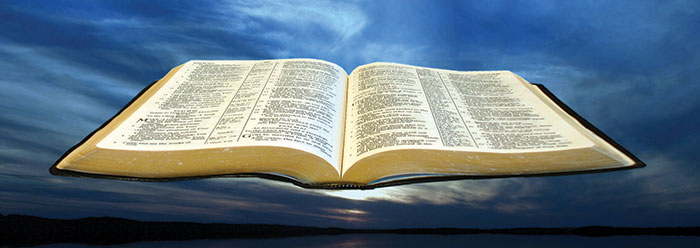Often in the pages of Acts & Facts we make reference to the great Flood of Noah’s day being global in extent and dynamic in intensity as opposed to being a mere local or tranquil event. There is no such thing as a tranquil flood, for even small-scale overflows do extensive geologic damage and often take a substantial human toll. But both Scripture and geology support the concept of a massive flood in the past that far exceeded any of those today, as illustrated by numerous examples. However, Scripture carries even more weight in understanding prior, unobserved events. What does the Bible have to say about the Flood’s extent and impact?
The unsurpassed deluge witnessed by Noah is described in sufficient detail to leave no doubt that it was both global and Earth-altering. Even the words for the Flood used in both the Old and New Testaments indicate an occurrence unique in both scope and effect. The watery experiences of the Red Sea and the Jordan River crossings were impressive enough but should not be compared to the cataclysm recorded in Genesis. Other Hebrew and Greek words are used to refer to these less intense local floodings, but those describing the great Flood are special. To study these specific terms today is to gain insight.
The Hebrew words for the inundation in Genesis 6–9 are mabbul mayim, meaning a “mighty deluge by waters.” In fact, mabbul is used only one other time outside of the Flood narrative—in Psalm 29:10. The whole of Psalm 29 is a poetic rehearsal of the Noahic Flood where God’s power reigns even over the torrents. The term mayim has application to various waters in other usages, but here it can only be referring to the surges of the great Flood. The two words together—mabbul mayim—might best be understood as a “deluge.” No other floodlike event or water crossing can compare.
In the New Testament, the Greek word chosen by the inspired writer is likewise unique. Again, other words are used for lesser overflows, but when the great Flood is in view (such as in Matthew 24:39, Luke 17:27, and 2 Peter 3:6) the Greek specially employs the mighty term kataklusmos (from which—as you may have surmised—English gets its word “cataclysm”). Scripture could hardly be more specific. This was definitely no local or ordinary incident but the world-destroying Flood of Noah’s day.
Behold, I, even I, do bring a flood of waters [mabbul mayim] upon the earth, to destroy all flesh, wherein is the breath of life, from under heaven; and every thing that is in the earth shall die. (Genesis 6:17)
And Noah was six hundred years old when the flood of waters [mabbul mayim] was upon the earth. (Genesis 7:6)
The Lord sitteth upon the flood [mabbul]; yea, the Lord sitteth King for ever. (Psalm 29:10)
They did eat, they drank, they married wives, they were given in marriage, until the day that Noah entered into the ark, and the flood [kataklusmos] came, and destroyed them all. (Luke 17:27)
Whereby the world that then was, being overflowed [kataklusmos] with water, perished. (2 Peter 3:6)
Geologic deposits, such as turbidites (sediments laid down by turbulent waters), tempestites, etc., speak of violent water action. Rock types, such as megabreccias, pseudotachylytes, and others, demand a catastrophic cause. The area covered by many of these strata varieties is often continent-wide in scope. Certainly, a past episode of far-reaching, cataclysmic water activity was involved. Without God’s supernatural protection, no life could have survived on land, and even in the ocean marine life died en masse. Scripture reinforces our geologic interpretations and provides a specific cause.
* Dr. Morris is President of the Institute for Creation Research and received his Ph.D. in geology from the University of Oklahoma.









